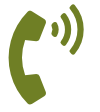Product sampling remains a crucial strategy for brands looking to introduce new offerings and engage potential customers. This comprehensive guide explores the world of product sampling software, providing insights into examples, alternatives, and proven tactics that can elevate your sampling campaigns to new heights.
Section Key Topics Introduction Overview of product sampling software Industry Examples Real-world applications across sectors Software Alternatives Cost-effective and innovative options Proven Tactics Strategic implementation for success Best Practices Optimizing your sampling campaigns Choosing the Right Solution Factors to consider when selecting software Introduction
Product sampling software has revolutionized how brands distribute samples, track engagement, and analyze consumer feedback. By leveraging advanced digital tools, companies can streamline their sampling processes, target specific demographics, and gain valuable insights to refine their marketing strategies.
Product Sampling Industry Examples
Consumer Goods
Product sampling platforms enable global food brands to manage thousands of sample requests efficiently. By segmenting distribution based on regional preferences and purchasing behavior, these tools ensure samples reach the most promising potential buyers, increasing the likelihood of converting trials into loyal customers.
Beauty and Personal Care
In the beauty industry, sampling software orchestrates personalized campaigns that resonate with different skin types and preferences. By tracking sample performance across demographics, brands can fine-tune their offerings and target marketing efforts more effectively.
Healthcare
Pharmaceutical companies utilize sampling platforms to distribute trial medications to healthcare professionals. These systems not only manage distribution but also collect valuable feedback, aiding in understanding product efficacy and refining marketing strategies for successful product launches.
Retail
Fashion retailers leverage sampling software to enhance both in-store and online experiences. By managing campaigns where customers can request free samples of new clothing lines, retailers can gauge interest and make data-driven decisions for future collections.
Product Sampling Software Alternatives
While dedicated sampling software offers robust capabilities, several alternatives can achieve similar goals:
- Influencer Collaborations: Partner with influencers to reach niche audiences and leverage their credibility.
- Subscription Boxes: Integrate samples into curated subscription services for targeted distribution.
- Virtual Sampling: Utilize augmented reality (AR) or virtual try-on tools to provide interactive sampling experiences.
- Email Campaigns: Implement targeted email marketing with sample request options or redemption codes.
- Trade Shows and Events: Distribute samples at industry-specific gatherings for direct engagement.
- Pop-Up Experiences: Create temporary installations in high-traffic areas for memorable brand interactions.
- Loyalty Programs: Integrate sampling into existing reward schemes to enhance customer retention.
- Social Media Contests: Run giveaways to generate excitement and encourage user-generated content.
Product Sampling Proven Tactics
To maximize the effectiveness of your product sampling campaigns, consider these industry-tested strategies:
Targeted Distribution
Leverage advanced segmentation tools to identify and reach the most relevant consumers based on demographics, behavior, and location. This precision targeting increases the likelihood of positive responses and higher conversion rates.
Real-Time Analytics
Utilize platforms that offer immediate insights into campaign performance. This allows for quick adjustments and optimization, ensuring resources are allocated efficiently and marketing efforts remain agile.
Personalization
Customize sampling experiences based on individual preferences and past interactions. Tailored sample kits create a more engaging and relevant experience for recipients, increasing the chances of a positive response.
Multi-Channel Integration
Implement a cohesive strategy that spans online request forms, in-store promotions, and event-based sampling. A unified approach ensures broader exposure and caters to diverse consumer preferences.
Feedback Collection and Analysis
Incorporate robust feedback mechanisms to gather valuable consumer insights. Use this data to refine products, adjust marketing messages, and inform future sampling campaigns.
Product Sampling Best Practices
To optimize your product sampling efforts, consider these best practices:
- Set Clear Objectives: Define specific goals for your sampling campaign, whether it’s increasing brand awareness, driving sales, or gathering consumer feedback.
- Ensure Product Quality: Distribute samples that accurately represent your final product to build trust and set realistic expectations.
- Create Memorable Packaging: Design sample packaging that reflects your brand identity and encourages social sharing.
- Provide Clear Instructions: Include easy-to-follow usage instructions and key product information with each sample.
- Follow-Up Engagement: Implement a follow-up strategy to nurture leads generated through sampling and encourage purchases.
- Measure ROI: Track key performance indicators (KPIs) to assess the effectiveness of your sampling campaigns and justify your investment.
- Compliance and Ethics: Ensure your sampling practices adhere to industry regulations and ethical standards to maintain brand integrity.
Choosing the Right Solution for Product Sampling
When selecting a product sampling software or alternative, consider the following factors:
- Scalability: Choose a solution that can grow with your business and handle increasing sample volumes.
- Integration Capabilities: Look for platforms that seamlessly integrate with your existing marketing stack and CRM systems.
- Customization Options: Opt for solutions that allow you to tailor the sampling experience to your brand and audience needs.
- Analytics and Reporting: Prioritize tools that offer comprehensive insights and easy-to-understand reports.
- User-Friendly Interface: Select software with an intuitive interface to ensure efficient management of your sampling campaigns.
- Support and Training: Consider the level of customer support and training resources available to help you maximize the platform’s potential.
By carefully evaluating these factors, you can choose a product sampling solution that aligns with your brand’s goals and helps you achieve measurable results.
Conclusion
Effective Product sampling software can significantly enhance your marketing efforts, drive consumer engagement, and provide valuable insights for product development. Whether you opt for a comprehensive sampling platform or explore alternative strategies, the key to success lies in strategic implementation, continuous optimization, and a deep understanding of your target audience.
For brands looking to launch or enhance their product sampling initiatives, NextBee’s platform offers a robust suite of tools designed to streamline sample distribution, track engagement, and analyze consumer feedback. With customizable features and advanced analytics, NextBee empowers brands to create impactful sampling campaigns that drive results across diverse industries.














